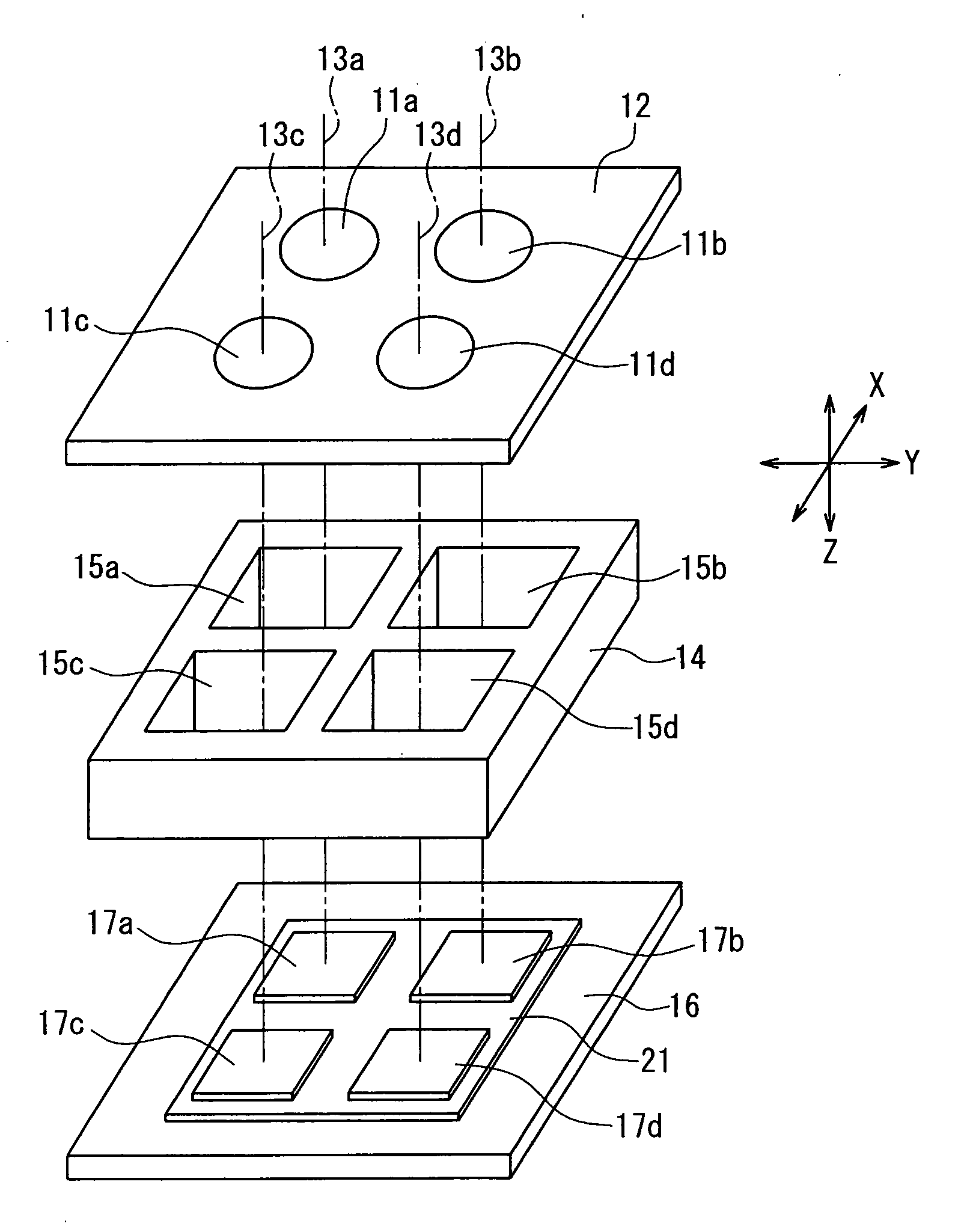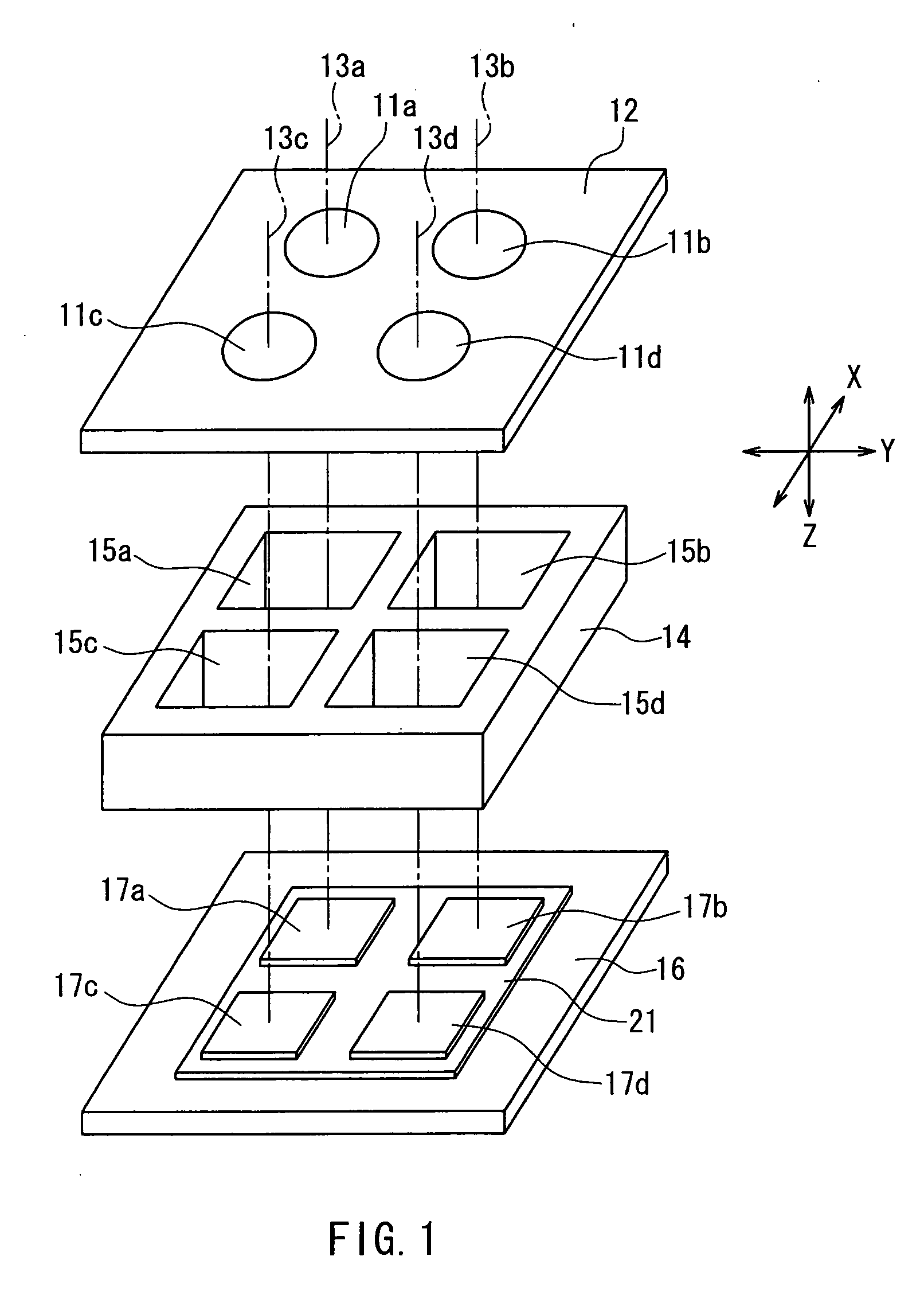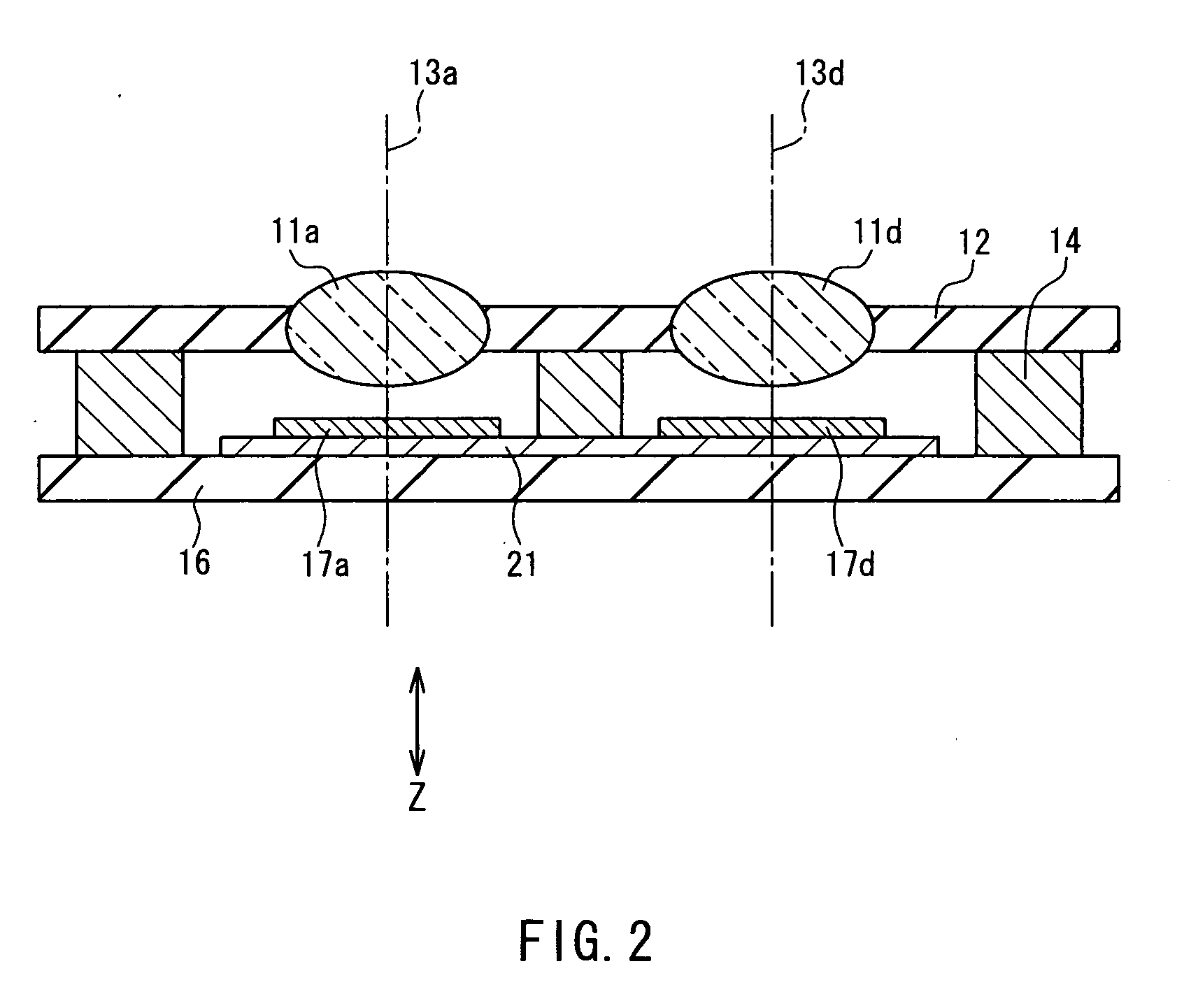Camera module
a technology of camera module and camera body, applied in the field of camera module, can solve the problems of affecting the quality of the image, the degradation of the synthesized image, and the increase of the image processing time, so as to achieve the effect of favorable productivity, accurate measurement of distance to a subject, and high quality
- Summary
- Abstract
- Description
- Claims
- Application Information
AI Technical Summary
Benefits of technology
Problems solved by technology
Method used
Image
Examples
embodiment 1
[0052]FIG. 1 is an exploded perspective view showing the schematic configuration of a camera module according to Embodiment 1 of the present invention. FIG. 2 is a cross-sectional view of the camera module according to Embodiment 1 taken along the optical axis.
[0053] Four lenses 11a, 11b, 11c and 11d are double-sided aspherical single lenses that are independent of one another, and are arranged and aligned by a lens holder 12 on a substantially common plane. Optical axes 13a, 13b, 13c and 13d of the four lenses 11a, 11b, 11c and 11d are each parallel to the normal of a principal plane of the lens holder 12. Herein, as shown in FIG. 1, it is assumed that the direction parallel to the optical axes 13a, 13b, 13c and 13d is the Z-axis, one direction perpendicular to the Z-axis is the X-axis and the direction perpendicular to the Z-axis and the X-axis is the Y-axis. The lenses 11a, 11b, 11c and 11d are arranged on a X-Y plane at lattice points formed with lines parallel to the X-axis an...
embodiment 2
[0090]FIG. 7 is an exploded perspective view showing the schematic configuration of a camera module according to Embodiment 2 of the present invention. FIG. 8 is a cross-sectional view of the camera module according to Embodiment 2 taken along the optical axis.
[0091] Four lenses 71a, 71b, 71c and 71d are aspherical single lenses with diffraction gratings on both sides. The lenses are independent of one another, and are arranged and aligned by a lens holder 72 on a substantially common plane. Optical axes 73a, 73b, 73c and 73d of the four lenses 71a, 71b, 71c and 71d are each parallel to the normal of a principal plane of the lens holder 72. Herein, as shown in FIG. 7, it is assumed that the direction parallel to the optical axes 73a, 73b, 73c and 73d is the Z-axis, one direction perpendicular to the Z-axis is the X-axis and the direction perpendicular to the Z-axis and the X-axis is the Y-axis. The lenses 71a, 71b, 71c and 71d are arranged on a X-Y plane at lattice points formed wi...
embodiment 3
[0102]FIG. 9 is a cross-sectional view of a camera module of the present embodiment taken along the plane including optical axes 73a and 73d. The camera module of the present embodiment is different from the camera module of Embodiment 2 of FIG. 8 in that an actuator 90 is added to shift an imaging device holder 75 relative to a lens holder 72 along the optical axis. The same reference numerals are assigned to the same elements of the camera module of Embodiment 2 and their explanations are not repeated.
[0103] The actuator 90 includes a piezoelectric element 91, a rod-shaped driving shaft 92 with the longitudinal direction thereof arranged parallel to the Z-axis, a pair of supporting blocks 93a and 93b opposed in the Z direction and a friction operation unit 94. One end of the piezoelectric element 91 is fixed to the supporting block 93a, and the other end is connected with one end of the driving shaft 92. The other end of the driving shaft 92 is fixed to the supporting block 93b. ...
PUM
 Login to View More
Login to View More Abstract
Description
Claims
Application Information
 Login to View More
Login to View More - R&D
- Intellectual Property
- Life Sciences
- Materials
- Tech Scout
- Unparalleled Data Quality
- Higher Quality Content
- 60% Fewer Hallucinations
Browse by: Latest US Patents, China's latest patents, Technical Efficacy Thesaurus, Application Domain, Technology Topic, Popular Technical Reports.
© 2025 PatSnap. All rights reserved.Legal|Privacy policy|Modern Slavery Act Transparency Statement|Sitemap|About US| Contact US: help@patsnap.com



